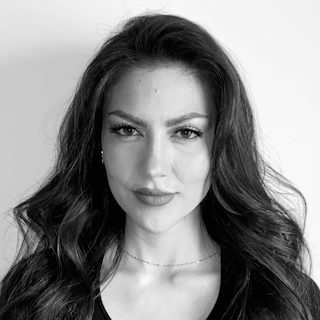X’s newly proclaimed ‘video-first’ strategy unlikely to assuage advertisers, experts say
Though the platform’s decision to expand its video offerings could offer potential value for brands, X’s lax approach to content moderation still has advertisers spooked.

X is now calling itself a 'video-first' platform / Adobe Stock
X, formerly Twitter, on Tuesday underscored its ambitions to become an “everything app.” Specifically, the company claimed it is “now a video-first platform.”
Advertisement
In a blog post, the company detailed its recent investment in video content on the app, which includes its new full-screen video format Immersive Video, video calling capabilities and long-form video uploads à la YouTube.
The company claimed that users now watch video on X in 8 out of 10 sessions. It also said that Immersive Video has garnered 100 million daily users, “more than half of whom are Gen Z, the fastest growing audience on X.”
However, the company was somewhat vague on the details. For example, it offered no context for the claim that users watch video in 8 out of every 10 sessions – what kind of post engagement (or non-engagement, considering that video posts auto-play on X) constitutes “watching”?
It’s an issue that has created skepticism for many since billionaire Tesla CEO and provocateur Elon Musk acquired the platform for $44bn in late 2022. “Whenever we get any stats that come officially from X or from Elon Musk, I always have to take them with a pinch of salt because they don’t make sense, they contradict stats from other sources or they just seem rather ambiguous in terms of what they try to explain,” says Matt Navarra, a leading industry analyst and social media consultant.
In any case, the decision to expand the app’s video content offerings comes just weeks after top advertisers, including Disney, Paramount, Apple and IBM, cut their ad spend on X in response to Musk’s promotion of antisemitic content and explosive interview with The New York Times’ Andrew Ross Sorkin in which the billionaire told advertisers to “go fuck [themselves]” (behavior that CEO Linda Yaccarino defended).
Advertisement
An investment in new forms of content may well be a strategy to woo back spurned advertisers, who in prior years generated around 90% of the social platform’s annual revenues.
The company went on to say in its blog post that its efforts to ensure advertising is “more relevant and impactful” have boosted total ad engagements by 22%. However, users have pointed out that the quality of ads in their feeds has declined significantly in recent months as top brands cut spend and created a lower-priced inventory for clickbaity dropshippers pedaling cheap gadgets.
It's bad enough that I was getting ads for gadgets so shitty even Wish. com wouldn't sell it but since I've blocked so many of these people I'm now getting served ads for an even lower tier of garbage. pic.twitter.com/3kmtpCjE7a
— Sea Specialist (@Road_Buster84) September 20, 2023
Anyone else have loads of these promoted ads pop up? Selling crappy gadgets. Literally every 10 tweets on my feed. And others pop us as soon as I block them pic.twitter.com/UPjFNp2gkk — Cian (@ciannotseean) June 24, 2023
Suggested newsletters for you
As part of its push to reengage big brands – many of whom have dialed back or left the platform entirely over brand safety concerns – X has established a handful of new partnerships with ad verification and brand safety measurement firms, including DoubleVerify and Integral Ad Science (IAS).
Early last year, X said it had run beta tests with both DoubleVerify and IAS that evidenced that 99% of measured impressions appear next to content deemed appropriate according to standards set by the Global Alliance for Responsible Media.
However, this level of brand safety has not been found to be consistent. A November report by media watchdog Media Matters revealed that ads for major brands like Amazon, NBA Mexico and NBCUniversal Catalyst were sometimes running alongside racist posts with hashtags like #KeepEuropeWhite and #WhitePride. X refuted many claims of the report and launched a lawsuit against Media Matters in response.
But X is hoping that its new video investments will help turn over a new leaf with advertisers. On Monday, the company detailed its expanded partnership with IAS, which includes new brand safety protections designed specifically for the app’s vertical video content. Effective February 1, the program will, according to X, “give participating advertisers maximum control over where their ads appear exclusively on the X vertical video feed.”
To augment the IAS partnership, X said it has expanded its brand safety team, bringing on a new partner manager and operations manager, with additional growth plans for Q1.
Nonetheless, some experts remain somewhat skeptical that X’s video push will help win back ad dollars. Growing investments in video offerings “give advertisers more of what they potentially would want,” says Navarra, “but … making X a ‘video-first’ platform doesn’t change the fact that you still have Elon Musk in control of the platform behaving as he does – amplifying some of the most extreme and distasteful content and promoting views that some might deem as inappropriate or not the sort of content that advertisers want to see.”
The notion of Elon Musk as the root problem of X’s potential advertising success is echoed by other industry leaders. “The problems that X has right now stem from the top, and unless the leadership changes, I don’t think they will be able to win back their ad spend,” says Katie Lance, an independent social media consultant. “There are too many other platforms that are more relevant to many marketers right now.”
And she’s right. X’s video products, in particular, will be competing in a crowded field of incumbents. On counts of both user engagement and advertising investment, X is dwarfed by players like YouTube, TikTok and Instagram Reels.
Still, Navarra says it makes sense that X would want to invest more in video content. Video is the content form du jour. The format generates far more views and engagement than text-based or photo posts. Plus, it proves effective for advertisers: 91% of consumers want to see more online video content from brands, according to a 2023 study by Wyzowl. Plus, 72% of consumers would prefer to learn about a product or service via video than any other medium, according to research from Hubspot.
X’s pre-Musk leadership team knew the power of video and was already hard at work expanding the app’s video offerings. In 2017, founder Jack Dorsey announced media deals with Vox, BuzzFeed, MLB and others focused on developing the platform’s live video offering.
Despite the strategic intelligence of investing in video, as long as X’s content moderation practices remain lax, Navarra says, the platform will struggle to succeed with advertisers.
“Given that he’s literally told advertisers to ‘go fuck themselves,’ I’m not sure that saying you’re a video-first platform and adding some other bells and whistles greatly shifts things in their favor,” he says. “The same brand safety risks and concerns still exist. It’s a big question mark as to what this really means in the next six to 12 months.”
For more, sign up for The Drum’s daily newsletter here.

